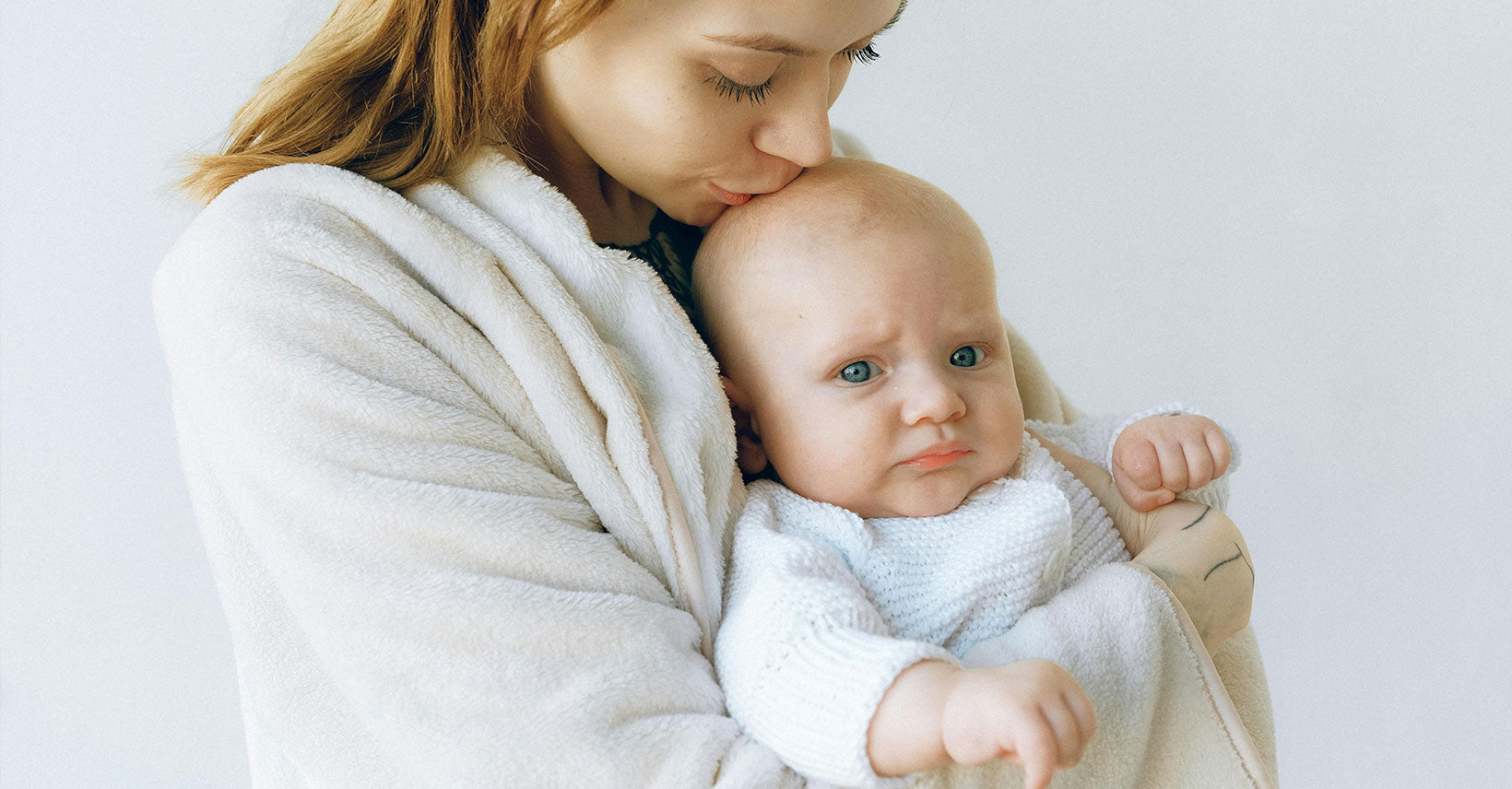


If your newborn seems to hate swaddling, it's important to remember that every newborn is different. Some newborns feel restricted or uncomfortable when swaddled, while others find swaddling comfortable. Parents can observe their baby's reactions to determine if the problem is swaddling. Trying different swaddling techniques or choosing swaddling alternatives like sleep sacks can help you find solutions to keep your baby comfortable and help them sleep better.
Below are some signs of newborns hate being swaddled:
A newborn who cries or is fussy soon after being swaddled may be uncomfortable. This reaction may indicate that the baby is feeling restricted or too warm.
If your baby is constantly squirming or wriggling while swaddling, it may mean they are trying to break free. This behavior indicates that they may not like the feeling of being restrained.
Babies have a natural startle reflex, but if this reflex seems more pronounced when swaddled, it may indicate that they are feeling more vulnerable or upset.
Newborns who have trouble falling or staying asleep while swaddled may find swaddling uncomfortable. This can lead to shorter naps and more waking.
Overheating can make your baby uncomfortable. If your newborn sweats a lot while swaddling, it may feel too hot, which can cause discomfort and irritability.
Some babies will try to break free from the swaddle by pressing their arms or legs against the blanket. This effort to break free indicates that the baby does not like the feeling of swaddling.

There are some reasons why some newborns hate being swaddled:
Some newborns feel uncomfortable when their movement is restricted by swaddling. They may prefer to have their arms and legs free, which makes them feel more comfortable.
Swaddling can sometimes make your baby too hot, especially if the blanket is too thick or the room is too hot. Overheating can cause your baby to become uncomfortable and thus dislike swaddling.
Newborns with sensitive skin may find certain fabrics or the tightness of the swaddle irritating to the skin. This irritation can be unpleasant for them.
Some babies naturally prefer sleeping positions that swaddling doesn't allow, such as with their arms raised or spread out. Being forced into a different position can make them uncomfortable and irritable.
If your baby has had an unpleasant experience with swaddling, such as being swaddled too tightly or feeling too hot, they may develop an aversion to swaddling. Past unpleasantness can cause them to resist swaddling in the future.
As babies grow, they go through different developmental stages. At some stages, babies may prefer more freedom of movement, and swaddling can limit that freedom. This natural development can lead to babies disliking swaddling.

Below are some tips for swaddling for parents:
It's important to choose a lightweight, breathable swaddle. This helps prevent your baby from overheating and keeps him or her comfortable. 0.5 tog sleep sacks are popular because they are soft and promote air circulation.
The swaddle should fit snugly around the arms, but loosely around the hips and legs. This facilitates healthy hip development and reduces the risk of hip dysplasia. Making sure your baby has room to move his or her legs also makes the swaddle more comfortable.
If you use blankets to swaddle your baby, there are many different swaddling techniques, such as diamond swaddling, square swaddling, and sleep sack swaddling. Experimenting with different methods will help you find the one your baby likes best and feels most comfortable in.
If your baby doesn't seem to like having his or her arms restricted, try swaddling with one arm out. This will give your baby a sense of security and some freedom of movement. This is especially helpful for babies who self-soothe with their hands.
Check your baby's temperature often to make sure they are not getting too hot or too cold. A good rule of thumb is that babies should wear one more layer of clothing than an adult would wear if the room temperature is the same. Adjust the thickness of the swaddle accordingly.
Make sure the swaddle is secure, but not too tight, especially around the chest. The baby should still be able to breathe easily. Always sleep your baby on his or her back, as this is the safest position and reduces the risk of Sudden Infant Death Syndrome (SIDS).
As the baby grows and preferences change, it may be necessary to adjust swaddling techniques or stop swaddling altogether. Pay attention to your baby's cues and comfort levels and be flexible to adapt to their needs.
If your newborn hates being swaddled, there are several ways parents can make their baby feel more comfortable. Observing your baby's reactions and trying different swaddling techniques or alternatives can make a big difference. It's important to consider factors such as your baby's body temperature, skin sensitivity, and preferred sleep position. By being flexible and attentive to your baby's needs, parents can find a solution that promotes better sleep and overall comfort.

Lily Hou
An expert in sleep sack design, is a valued contributor to Kaiya Baby's blog. With a strong background in baby sleep bags and maternal care, she is highly regarded for her professionalism. Lily prioritizes baby comfort and safety in her designs, using high-quality materials. Her insightful articles on sleep bags have been featured in reputable publications and have gained a significant readership. Trust Lily to help you create a comfortable and safe sleep environment for your baby, backed by her proven track record in the industry.
Leave a comment
This site is protected by hCaptcha and the hCaptcha Privacy Policy and Terms of Service apply.